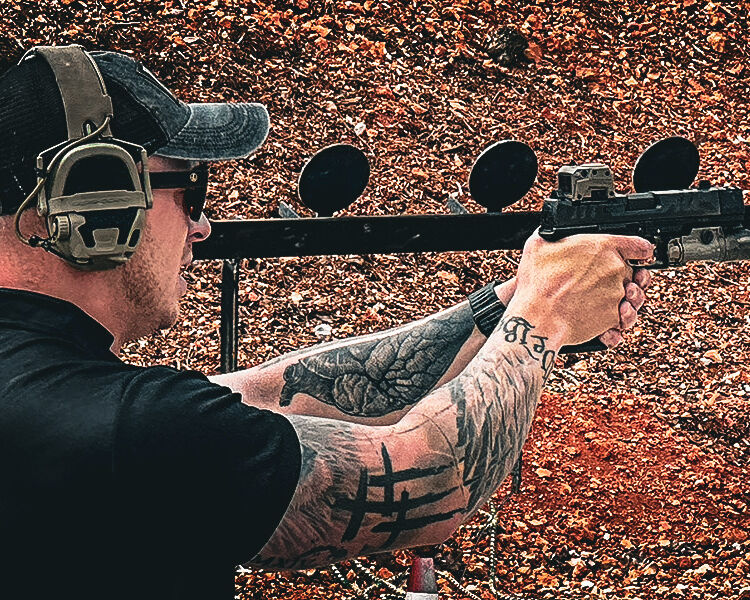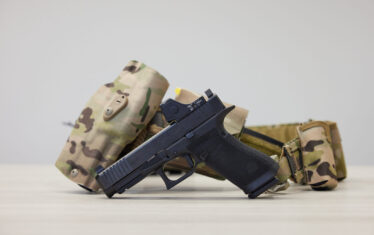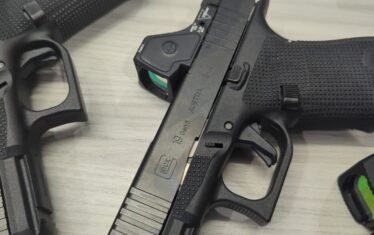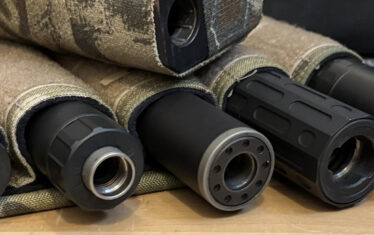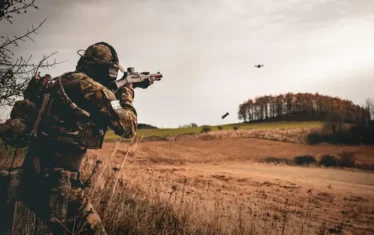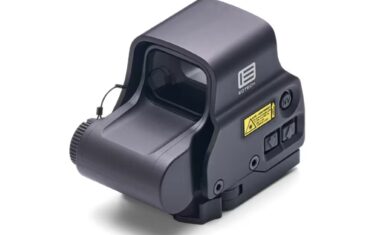There are a lot of fun drills to run when you hit the range. But the DOPE drill has become my go-to drill for testing my accuracy & speed together.
I call it the Bill Drill on steroids. The D.O.P.E (Data on Previous Engagement) was introduced to me by Rick Crawley, owner of Achilles Heel Tactical and Safariland CADRE member. This drill is a total of 25 rounds from distances of 5, 10, 15, 20, and 25 yards.
A shot timer is needed for this drill so pick one up if you don’t already have one. Inexpensive models can be found for as low as $40 and they are worth every penny. If you haven’t used a Shot timer before, it adds a level of pressure to your drill. They are commonly used by competition shooters but offer a unique benefit for self-defense training as well.
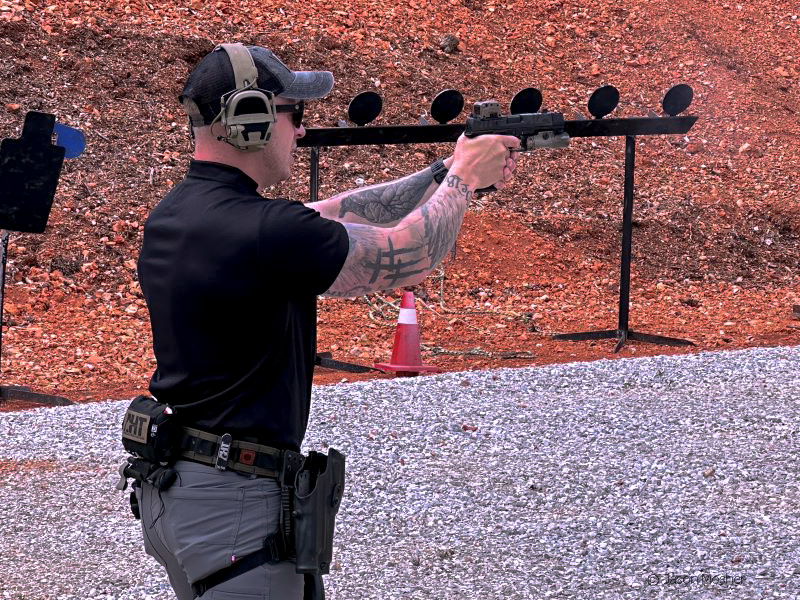
Standing still and shooting a target is great for working on trigger control, breathing, and your grip. But it does little to prepare you for a self-defense incident. I’ve been a cop for more than 15 years and I’ve never seen a shooting take place where everyone stood still. It happens in a flash and there’s no time to think, just react.
This is why the D.O.P.E drill is so helpful in blending accuracy, speed, and target acquisition. You can add components into the drill for just about every scenario, which we will cover here in a bit. But first, let’s talk about exactly how you do the D.O.P.E drill.
What’s the D.O.P.E drill?
The D.O.P.E drill is meant to help you find a balance of speed and accuracy. As I mentioned above, you will need a total of 25 rounds in your firearm. If you’re using an AR-15, just load them all in one magazine. For handguns, use as many mags as you need.
You can start from multiple positions like holstered, low-ready, etc. But for now, let’s start from low-ready for this drill. This means your eyes are on the target and your barrel is pointed at the ground in front of your target. When you hear the “beep” of the shot timer, raise your firearm and fire five rounds at the target as fast as possible.
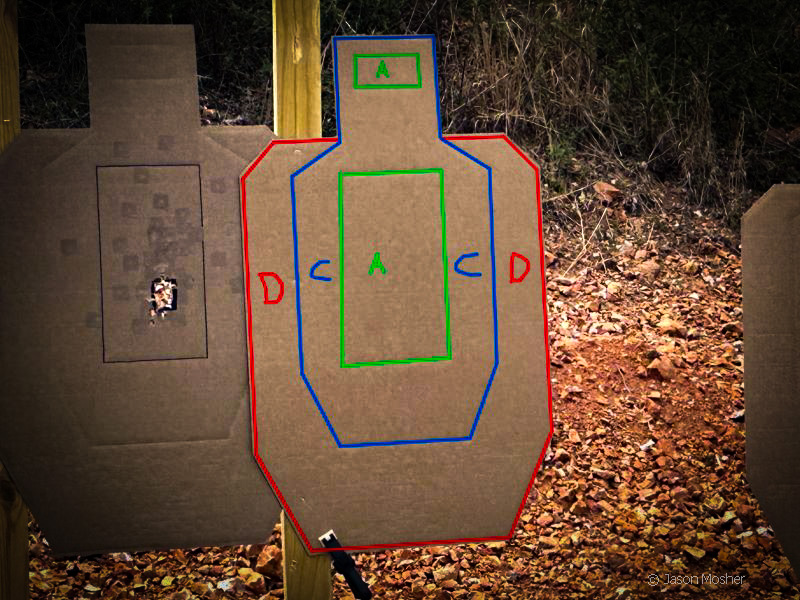
While any target can be used, this drill was designed for use with the USPSA target. It will have an A, C, and D zone. We will talk about scoring in a minute. While you are firing as fast as possible, the goal is to get your rounds in the A zone of the body. But here is where it gets a little tricky.
If you fire too fast and hit the C and D zone but not the A zone, you receive very few points. Miss any of the five rounds on the target and you could end up in the negative points. But when we score, it will be based on your speed as well. This means if you shoot too slow and hit all five in the A zone, you still have a bad score.
You receive the following points for the A, C, and D zones:
- A Zone = 5 points
- C Zone = 3 points
- D Zone = 1 point
- Complete Miss = Negative 10 points
Shoot from five distances
The first round of fire is from the 5-yard mark. Once you fire five rounds as fast as possible, write down your time on the corner of the target or a notepad. Next to the time, write down your total points from your hits. So, if you hit four times in the A zone, and twice in the D zone, you have 22 points. Write 22 next to your time and that is round one.

Move on to the second round of fire, which is the 10-yard line. Repeat the same process, writing down your total time and points from the 10-yard mark. Then move on to the 15 and so on until you get to the 25-yard line.
As you move further away from the target, you will notice it gets harder to be as accurate while shooting fast. You may have to slow down just a little as you get further away from the target.
When you’re done, you should have five records on your paper. A total time and score for five rounds of shooting. Now we need to add them all up and determine your hit factor.
What is a “hit factor”
A hit factor is the number you get from dividing your total points by your total time. The photo below shows the total points and time from all distances, which is 92. When you divide 92 by the total time of 7.72 seconds, you have a hit factor of 11.9. Now you have a standard to try and beat the next time you perform the drill.
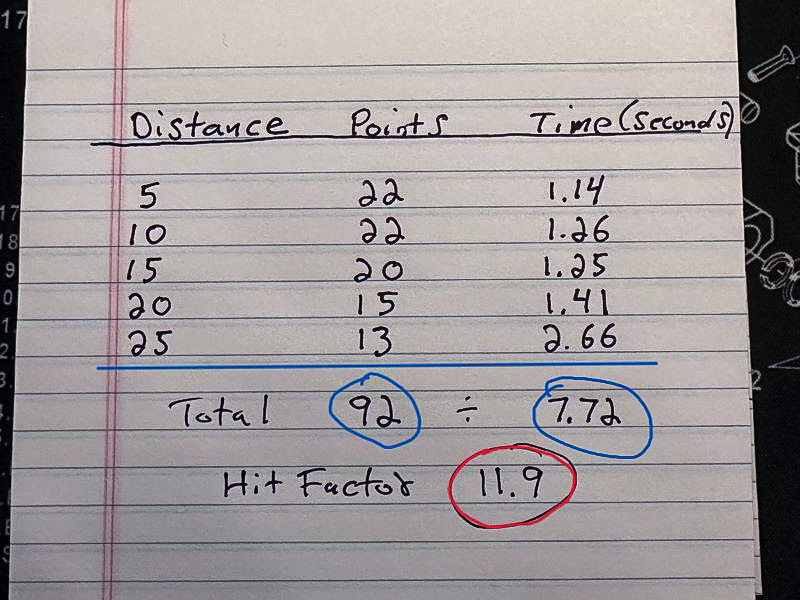
Another thing to watch for when using the shot timer is the time it takes you to fire your first round after the beep. Your response time should be a fraction of a second.
Using the scoring card above, you can see I took way too long shooting the last five rounds from the 25-yard line. I also only had one in the A zone, two in the C zone, and two in the D zone. If I had fired much faster with the same score, it would have improved my hit factor.
Use the same target for the entire drill
To save on targets, don’t hang up a new target each time, keep reusing the same one. You can mark each hole on the target with a different symbol for each of the five distances. Here is what Achilles Heel Tactical recommends:
- 5-yard line: Mark all hits with a slash
- 10-yard line: Mark all hits with an X
- 15-yard line: Mark all hits with a circle
- 20-yard line: Mark all hits with a square
- 25-yard line: Mark all hits with a triangle
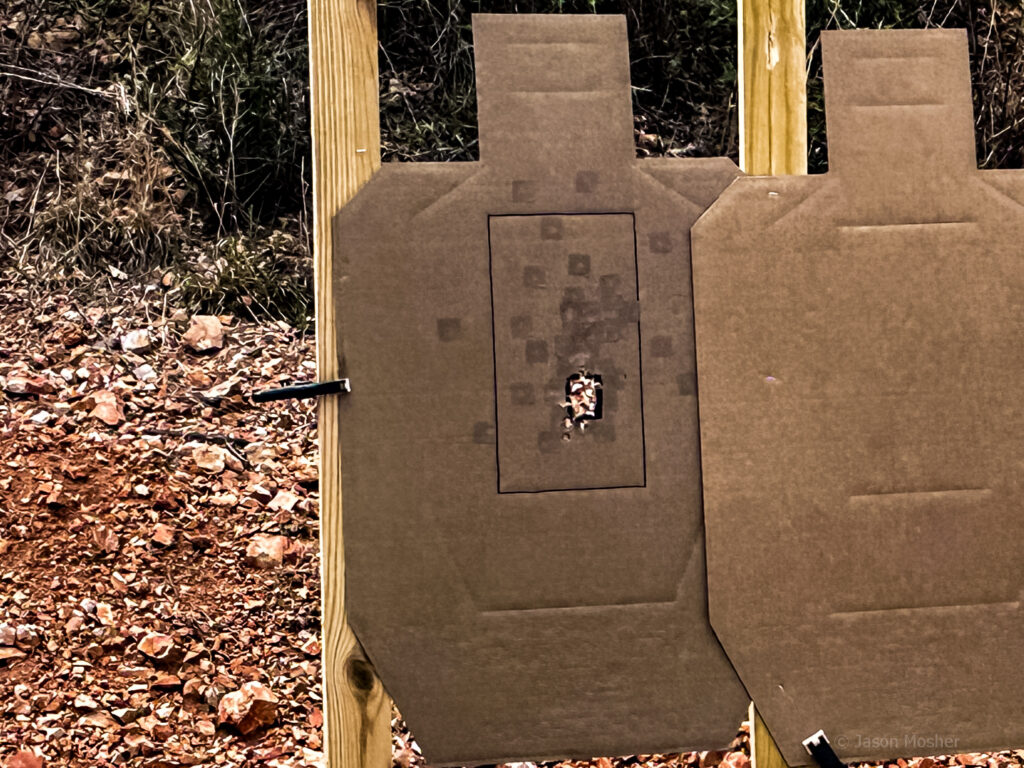
Using this method allows you to go back and review your shot pattern at each distance. After you have completed the entire drill, use stickers or tape to cover all the holes. Now you are ready to run the drill again with the same target.
The importance of speed and accuracy
It feels good to take aim, shoot a target, and make a nice small hole in the center of the bullseye. But again, in the real world, it doesn’t work that way. You need to be fast and hit the target. You don’t have to drill a hole in the bullseye, you just need to be effective and have your rounds hit where it counts. This is why the A, C, and D zones are marked as they are.
If you make a little group in the center of the A zone, you probably are not shooting fast enough. The faster you can shoot while landing as many in, or close to, the A zone, the better. During an incident, your brain must already process what is happening and who the threat is, and tell your body to react. Time is of the essence.
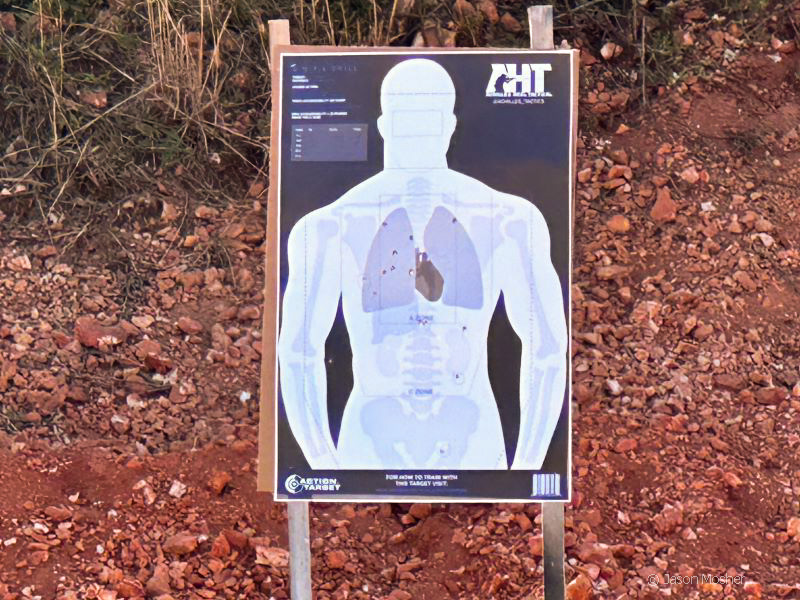
Someone who lands all their rounds in the A and D zone but shoots extremely fast will have a much higher hit factor than someone who shoots slower and makes a nice group in the center of the A zone. Achilles Heel Tactical makes a special target just for this drill with the vital organs displayed on the target (see photo above).
Are you ready to run the D.O.P.E drill?
You can run this drill from the low ready, as we talked about above, or from a holstered position. Try it with your concealed carry gun wearing the same clothes you wear every day. Because let’s face it, most of us have “range clothes” that provide better access to a gun than our daily attire.
You can also perform this drill from a prone position, from a vehicle (if one is available for range use), and other positions. Keep track of your hit factor and try to increase it. This means you need to get faster, and/or more accurate. Remember, the goal isn’t to make a pretty target, it’s to push yourself to be as fast as possible. If you land all of your rounds in the A zone, go faster. Push yourself to failure.
Since you start with the gun in a different position without having your sights on the target, it increases target acquisition as well. Getting your sights on target quickly is no easy task. In fact, this is where most people (including myself) struggle.
But this is why we practice right? We want to get better, improve our skills over time, and increase our level of preparedness. This is a fun drill that gives undisputable feedback. Rick Crawley’s D.O.P.E target can be purchased from Action Target if you want to use it.
If you haven’t run the D.O.P.E drill yet, try it out and see what your hit factor is.





